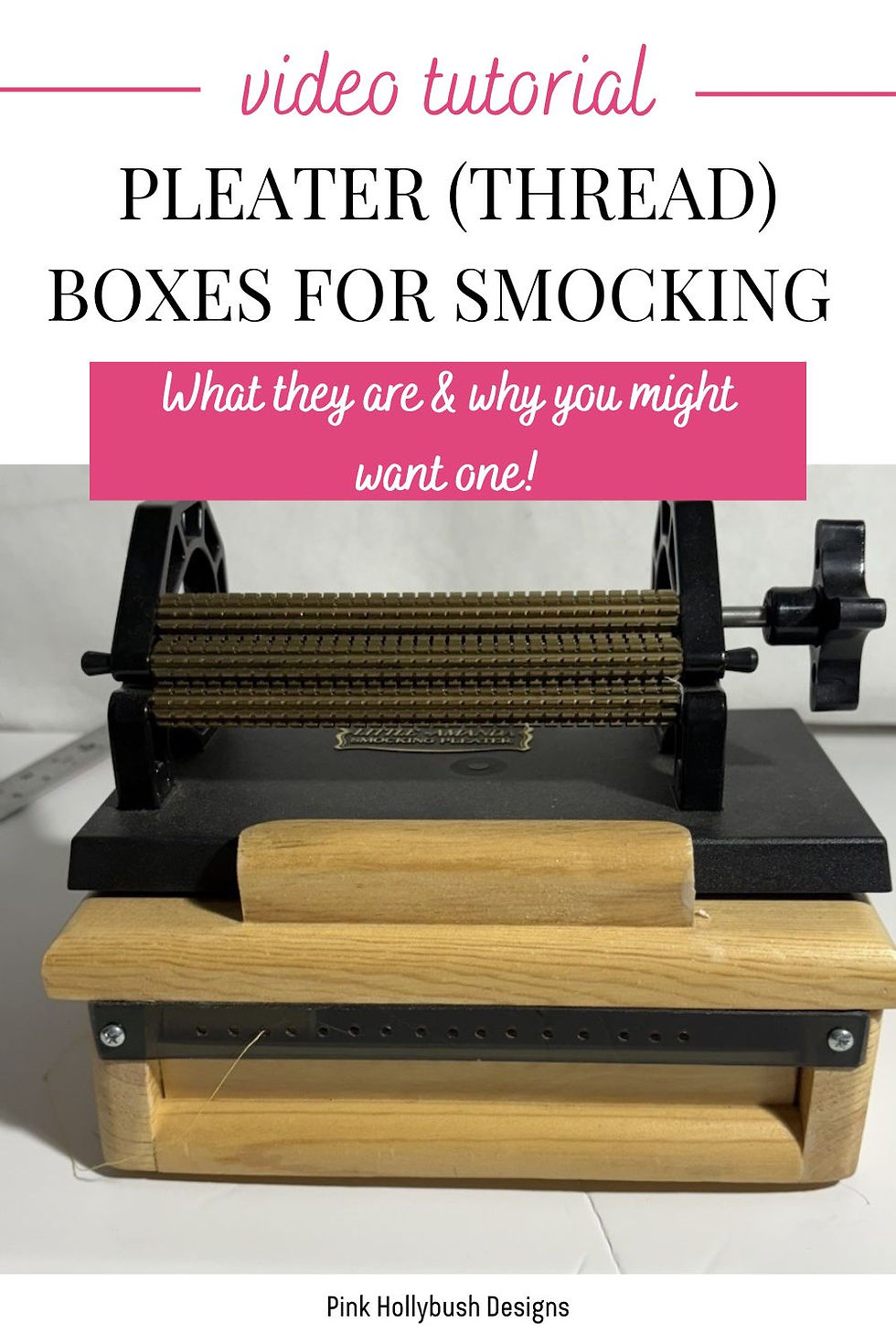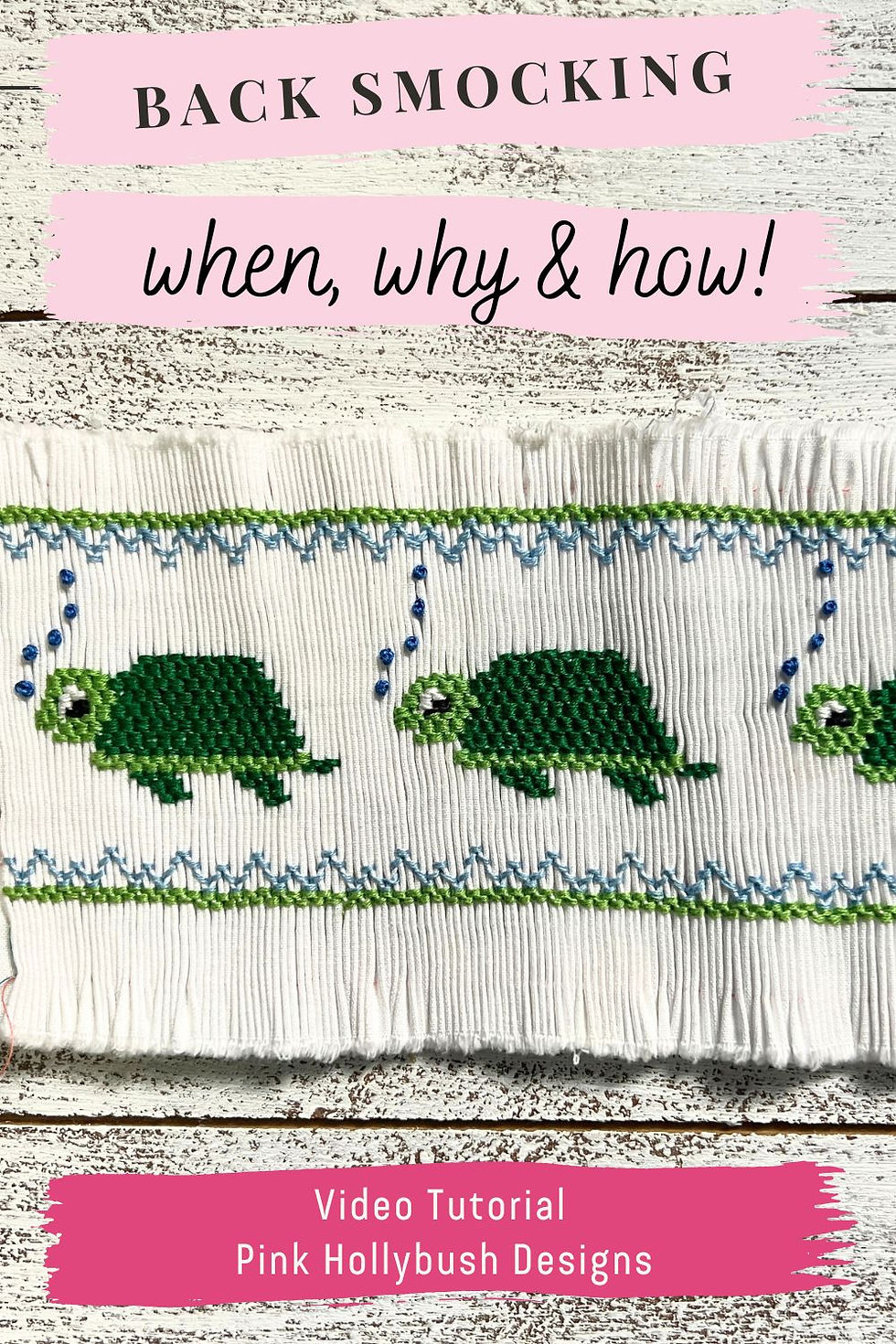Smocking Tutorial: The Surface Honeycomb Stitch
- Lisa Hawkes
- Apr 17, 2018
- 2 min read

It's time for another smocking tutorial! One of my favorite smocking stitches is Surface Honeycomb. It is considered an advanced stitch because the thread passes through each pleat twice, but don't let that scare you; it is quite simple to stitch. In fact in some ways I think it is easier than the Wave Stitch if you are smocking across a row because the threads touch each other so it is immediately obvious if you make a mistake.
Get into starting position and stitch an up cable.

Take the needle down to the next pleating row and pass the needle through the same pleat that you just stitched through above.

Stitch a down cable and then travel back up to the original row, again going through the same pleat. The needle goes through a new pleat when stitching a level stitch (up or down cable) and goes through the same pleat after traveling to the new row.

Here are several completed Surface Honeycomb Stitches. Notice that the cable stitches on each row touch each other with no empty pleats in between.

Surface Honeycomb can also be a traveling stitch that forms deep V's or diamonds. To travel to additional rows, instead of stitching a down cable and reversing direction, stitch an up cable and then travel down to the next pleating row, again going into the same pleat. Remember the rule that the needle always leads and the thread follows. As long as the stitch is traveling down, keep stitching an up cable (thread above the needle) until you get to the bottom.

At the bottom of the V, stitch a down cable to reverse direction.

Travel up the same way, going through a new pleat on the level stitch, and going through the pleat just stitched as you travel.

Here is the finished Surface Honeycomb stitched between 2 pleating threads and travelling between 4 pleating threads. I hope you give this stitch a try!




